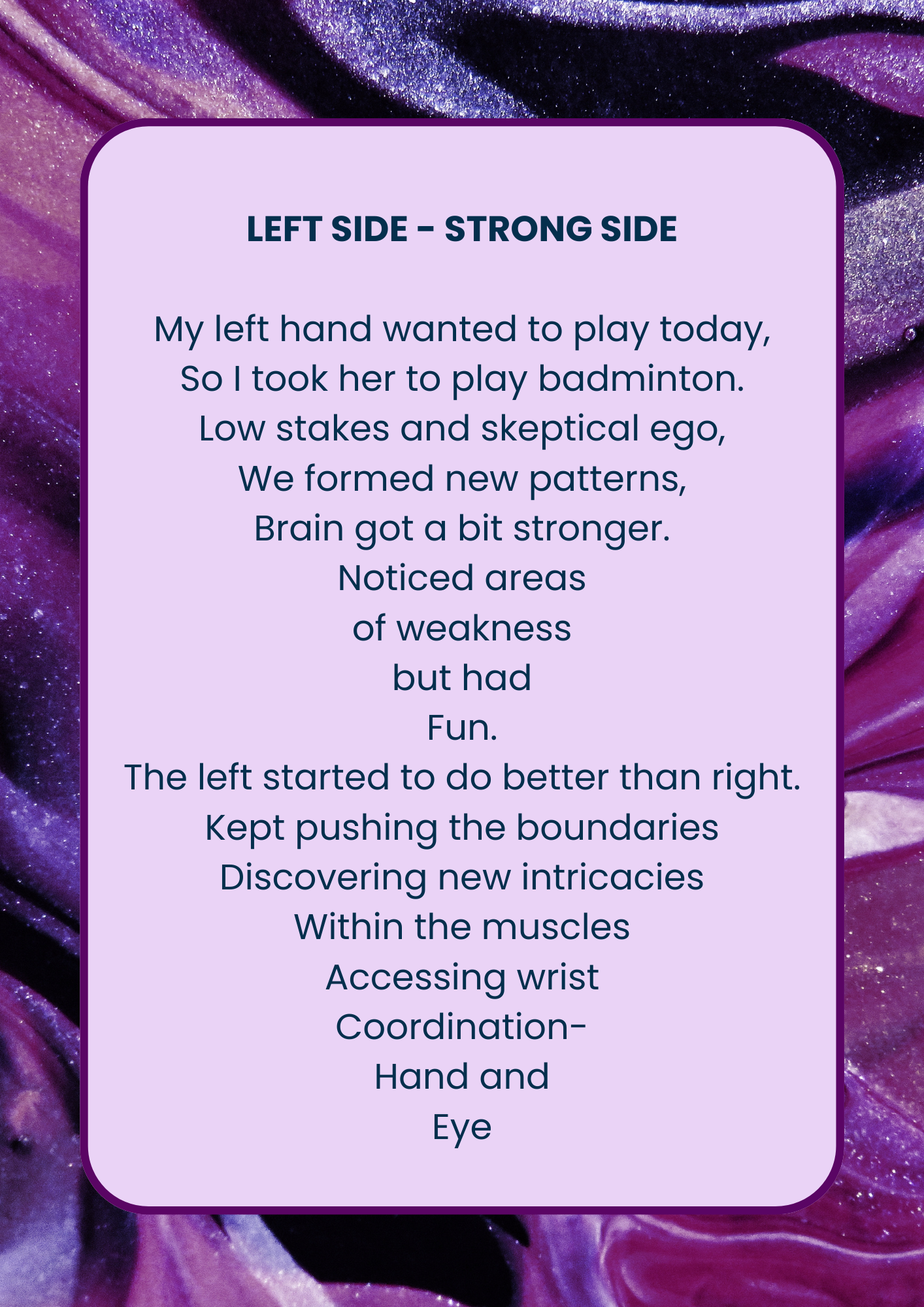Non-Dominant Side Training: An Undervalued Practice in Athlete Wellness
Switch It Up: Benefits of Non-Dominant Side Training in Sport
I recently played a "friendly" game of badminton and decided to use my non-dominant hand. Why? My knee was acting up from an injury, and my thoughts were distracted and all over the place. Switching to my left hand felt like hitting reset. My brain shifted focus entirely to the intricate movements on my left side—how my wrist controlled the swing, how difficult it was to step first with the opposite leg.
It wasn’t pretty at first. But after some time, my left hand was outperforming my right (which wasn’t too hard considering my right set the bar fairly low) . Despite my loss on the scoreboard, I was surprised to find myself in flow, having fun, and completely detached from my earlier frustrations.
As a movement coach, this got me thinking: how often do athletes have the opportunity to practice and challenge their non-dominant side?
What started off as a quirky experiment this day sent me down a nerdy spiral on the benefits of non-dominant side training in sport.
Spoiler alert: this simple practice is a nifty gold training nugget in athlete development and wellness.
Quick Wins: Fun, Focus, Presence, Resilience
Non-dominant side training can immediately shift the dynamic of how we approach movement and problem solving in sport. By focusing on the less-coordinated side of our body, we create a unique opportunity for growth:
Lower Stakes, More Creativity: When you switch sides, there’s less pressure to perform perfectly. It’s about exploration, creativity and neuroplasticity
Improved Focus: It’s no secret. We have an attention span problem people!! The good news is, non-dominant side training fights against this. Training this way creates new neural pathways, heightening problem-solving skills and motor control.
Be in the Present : It’s hard to dwell on those other distractions that occupy your mind when you’re fully present on the task at hand. In this case, the task itself is just using your other hand.
Now, don’t get me wrong—some athletes might get frustrated with non-dominant training at first - Triggered, if you will. But this initial reaction is so valuable. It provides insight into their emotional capacity towards adversity. Some athletes may instantly discover an “edge” if they continue to develop the skill.
To ease into non dominant training by keeping the stakes low and playful. As they grow more comfortable, you can raise the challenge. Be sure to explain how this training builds them into more versatile, creative, and resilient athletes.
Long-Term Benefits: Injury Prevention and Versatility
Beyond the immediate benefits, non-dominant side training addresses some of the bigger challenges in athlete development today.
Early Sport Specialization and Drop Out Rates
Early sport specialization (ESS) will always get a big no from me. It often pushes young athletes into repetitive movement patterns, year-round increasing the risk of overuse injuries, burnout, and even early dropout in sport. Incorporating diverse movement practices, like non-dominant side training, encourages more balanced development and prevents these pitfalls. It helps builds adaptable, well-rounded athletes who can handle movement demands in and beyond competitive sport.
Preventing Overuse Injuries in Sport
Over-relying on the dominant side of the body creates larger muscular imbalances and strain. Training the non-dominant side redistributes the workload, enhances awareness and reduces the risk of overtraining. Humans in general will always have an asymmetrical bias, which is why the majority of people are right handed. However, noticing how one side feels and moves compared to the other will benefit athletes in the long run. Athletes can become aware of compensatory patterns which can inform the direction of their strength and conditioning, rehab, or biomechanics training.
Developing Athletic Versatility
One of my favorite “party tricks” as a volleyball player was casually being able to hit with my left hand in control when I needed to. In moments of high-pressure, creativity and quick adaptability are game-changers. Non-dominant side training strengthens these qualities, giving athletes a competitive edge.
The Meditative Effect- Playing the Long Game
Non-dominant side training isn’t just a sports skill. It’s also a general mindfulness and brain training tool, bringing moments of calm and playfulness into daily life.
Try switching up your routine—eat with your non-dominant side, brush your teeth, write or paint with it. These simple shifts force you to slow down, engage your brain differently, focus on the moment and give new perspective. It’s a playful way to bring meditation into your day while sharpening your brain-body connection.
Take a look down life’s timeline to see how the habit of using our non-dominant side can help preserve our motor control and lower stress as we age. More training like this can help preserve our relationship to movement for longer leading to healthier lives.
Dare to Move Differently
Non-dominant side training offers more than just physical benefits. It’s a way to approach movement with curiosity, to build resilience, and to reconnect with the joy of sport.
If you’re as curious about these ideas as I am—or want to challenge the status quo in athlete development—let’s connect. My Movement Wellness Workshop explores how to integrate holistic movement practices into an athlete’s training for better performance, wellbeing and creativity.
